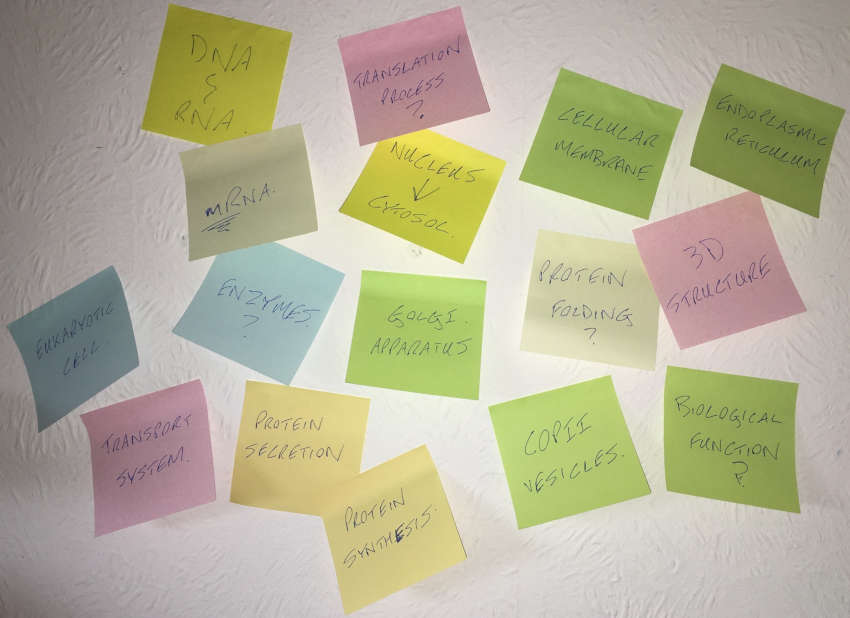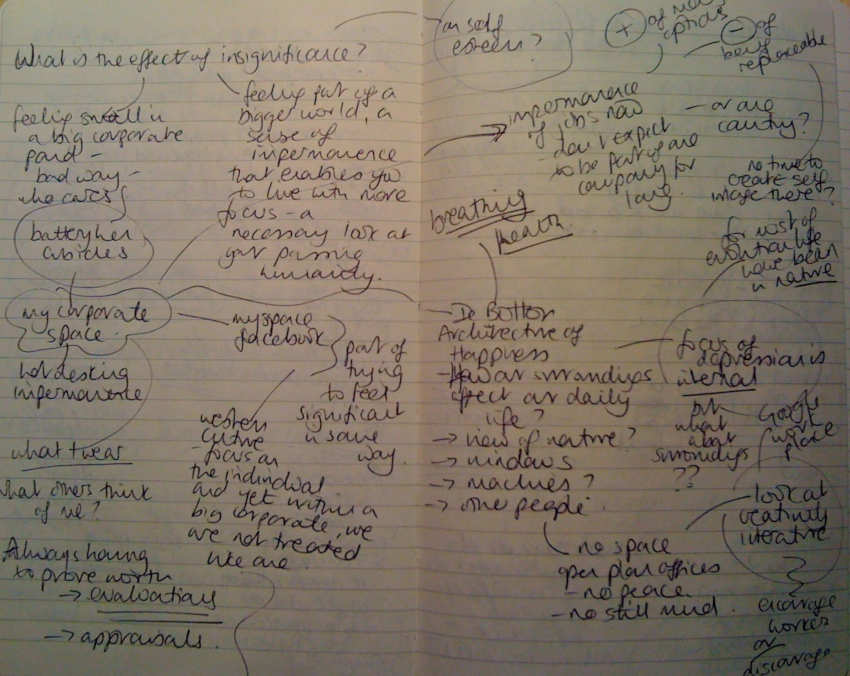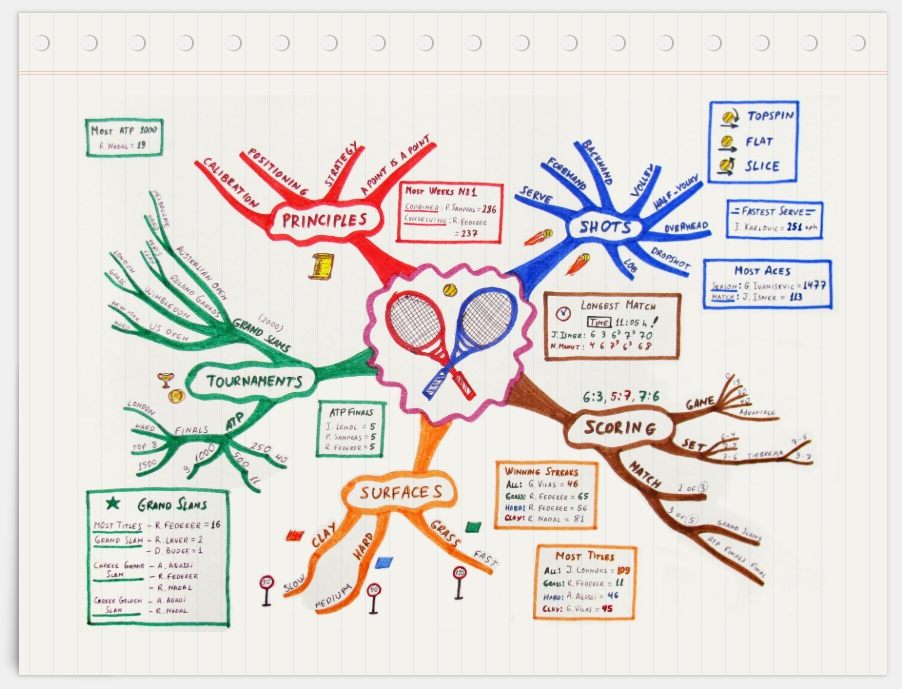Organising your Thoughts
Note making is an important part of active study. Your notes should be unique creations that summarise your thinking, learning, understanding and questioning. To be an active and independent learner, when making notes for your essay, they should reflect your understanding, not just describe what the author has said.
The purpose of notes for essay writing is to record information and ideas, but also to express questions that need to be explored, document citations, capture information to support your argument and to help keep you outcome focused.
Effective Notes
Making effective notes is a process of reviewing, connecting, examining, and synthesising. You will have to be selective in the information you note, and this will help you develop an original approach to your writing. When summarising you are processing information at a deeper level, and this helps when critically examining the literature. Thorough source notes are also great for helping plan and develop essays and paragraph structure. Notes should differentiate between your ideas and those of others, to avoid unintentional plagiarism.
Developing Synthesis
Having collected your relevant research from a variety of sources, we now bring them together to form a balanced and cohesive argument. The information might support, or be contradictory to your ideas , but regardless we manipulate the information to present our argument. It is important to present your assessment of the ideas collected and embed your own ideas and thoughts. By doing this you are defining your own point of view and developing an argument.
Steps to Developing your Ideas
-
Gathering your ideas
Through your reading you will have gathered together a lot of information and notes. To produce a good essay you need to be able to clearly articulate what you think. There are lots of great ways to initially collect your ideas.
The information below outlines some ways to capture your initial ideas:
Brainstorming

Brainstorming involves capturing all ideas that you believe are relevant to the question. Write down all ideas, concepts or important questions you can think of. Use post its to think freely, and generate ideas. Put each idea on a separate post it.
Take what you have written and group together any ideas that are related to each other.
Review each group and try to define the main concept that links them. Think about whether you have the evidence to support each idea or concept or whether you need to do more research.
This method can help you to identify the main themes from your research and can prompt you to think about what the most important concepts areas and how to best structure your response.
Free writing

This simple technique is great to get you started. Write down your question and write without any constraint.
Don't worry about structuring your ideas. Just dump all of your ideas onto your page , and give yourself time to reflect on the question and your module. This is a great way to capture what you already know about your subject, and you'll be surprised how much you know!
Look over what you have written and highlight the common themes of areas. You may discover where you have gaps in your learning and understanding, and where you might need to do reading.
By appreciating your understanding of the question, you can then organise your thoughts into a more cohesive structure.
Mind Maps

Mind maps are a great way to visualise your ideas. You can either draw your own mind map, or use a Mindmap app like MindView.
Start by writing your assessment title in the middle of your page. Consider your assessment question and draw branches to ideas, themes, concepts and theories that you think might be relevant to answering it.
Draw more branches from these thoughts, and keep adding concepts until you feel like you have explored the question in full.
This is a great way to visualise related content and build connections between your ideas.
As you read:
- add new ideas to your map
- developing a hierarchy of ideas and relationships
- add citations to ideas
- get an overall view of your structure
-
Synthesising your ideas
To create our own argument, we need to synthesise ideas, making contrasts, linking them and extending them to reveal our own insights. Synthesis is a key feature of analytical academic writing.
It is the skill of being able to combine a number of sources to either support an argument or refute it.
We also synthesise sources to be able to compare and contrast ideas and to further expand on a point.
It is important that the writer shows the reader that they have researched the subject matter extensively in order to not only demonstrate how a variety of sources can agree or disagree but also to present more balanced arguments.
-
Sequencing your argument
An essay has a generic structure- Introduction, main body, conclusion and references.
Within the main body is our main argument. There is no format on how your main argument should be organised, but remember that your purpose is to inform and persuade the reader that your ideas and arguments are valid. To do this effectively your essay needs to flow from one idea to the next, in a logical manner.
Potential Layouts for Different Concepts Concept Compositional layout Discussing a process Linear or chronological order Evaluating evidence Sequence by importance or relevancy Explaining a concept Move from the broad to the specific We use signaling or transitional language to illustrate movement in our essay.
Look at the Manchester Phrase bank for examples of good transitional language.
-
Creating a organisational plan
When organising the layout of your essay , you should consider the logical narrative, so think of your essay as a road that needs to be navigated. Think about the order that you'd like to present your argument.
Sometimes it is helpful to add your main points to post-its and move them around to help decide on the order of your argument.
This is an organic process and you might need to adapt your plan to accommodate changes or new ideas.
Example of post it planning for structure
Planning Essays & Developing your Ideas Video
This short video will illustrate how to start researching an essay by embedding your own ideas, synthesising information and producing a loose initial structure for your work.
Developing your ideas
Self Paced Guide
Aims of the guide:
- Demonstrate practical approaches to gathering your ideas.
- Knowledge of how to develop your ideas into a clear argument.
- Knowledge of how to organise and structure your ideas to develop an essay outline.
How to access the guide
Use the back and next buttons at the bottom right of the screen below to navigate through the guide. Alternatively, use the contents button to jump to a specific page.
Accessibility options are available at the bottom left-hand corner of the screen
